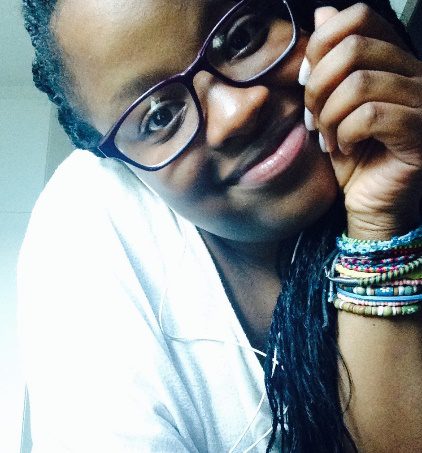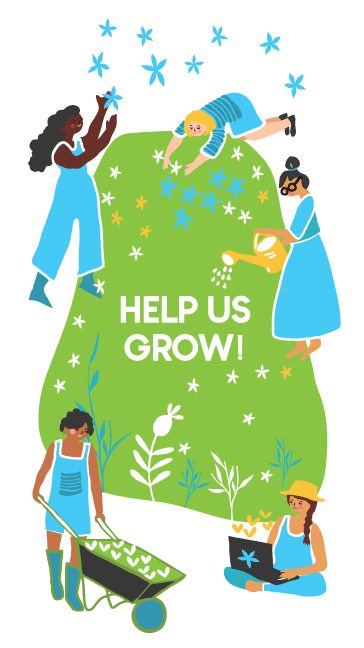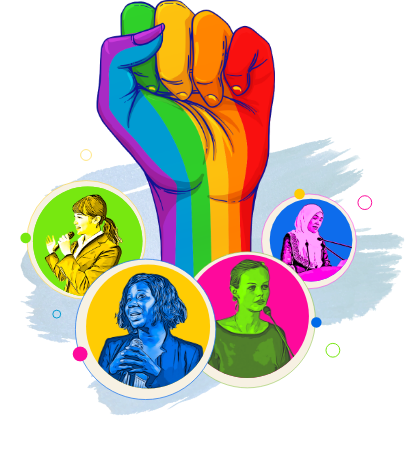I am a 21 year old feminist from Zimbabwe. Being a student at the University of Cape Town has opened my mind to different issues that are rarely discussed in public. I am interested in understanding Feminism from different perspectives, hence, I have been researching on Disability and Feminism. Just indulge me for a while as I sound very academic. I am a student!
The concept of intersectionality is often used to analyse the different and various ways in which individuals are oppressed and marginalised. Intersectionality proposes that social and political institutions are connected and need to be analysed together and not separately. Such institutions include race, gender, sex religion and disability. Disability; however, is one of the many intersections that is forgotten and often silenced, causing an even larger marginalised group of individuals. In this paper, I am attempting to examine feminist responses regarding the discourse around disability and why the issue is not widely included in feminist theory. My opinions are framed in feminist thought and activism, specifically in a South African context.
Feminists have expanded their research beyond just gender in order to identify how gender intertwines with race, sexuality, class and many other social systems. They have explored these differences in order to include the many intersections of identity and show how they produce various subject positions. From what I have seen, disability studies aim to understand and destigmatise the subject position of the disabled. Like gender, the notion of disability is socially constructed through biological reality as Wendell (1989) described. Gender and disability are largely socially constructed. In order to understand how disability is socially constructed, it is important to define disability. Who is disabled?
I like the way Grönvik (2009) defines disability as some “functional limitations in relation to which the effects of impairments on an individual’s capacity to perform activities of daily living” such as being blind, deaf, quadriplegic and paraplegic. This way of defining disability stems from medical perceptions and understandings of how the body should function. Just like how the female body is seen, then gendered, people with disabilities are marginalised, especially if their disabilities are visible. Well, Garland-Thompson (2002) argues that subjects are produced by differentiating and marking bodies and comparing them to what is seen as ‘normal’. What is normal by the way? I would like to touch on the politics of appearance. The media and the world have presented us with the ideal body. These ideals may change, but there is always an ideal body. Do you have an ideal body? If we examine this closely, these ideals are not always only about our appearance, but also ideals about our strength, and how to control our body and energy as put across by Wendell (1989). Such idealisation marginalises the physically disabled as well as perpetuates discriminatory practices. Let’s take a look at doctors and medical practitioners who are constantly trying to find cure and ‘fix’ people with visible disabilities. I find this extremely problematic, as this institution is essentially trying to remove the experiences of disabled people from the society, thus disintegrate these experiences from culture. Without this integration, the general populace know very little or nothing about disabilities. Not even my friends! This lack of knowledge is what is problematic, as a disabled person cannot take full part in the society, not because of what they can or cannot do, but rather as a result of the society’s fears and misunderstanding. I believe that feminism and disability attempt to question these premises that cast disability as a problem, thus situate the disability and experiences of those who are disabled in the context of inclusion. Engaging in discussions around Disability and Feminism allows us to reimagine disability by rethinking the stereotypes about people with disability.
There is a very strong link between gender and disability and this can be seen in South Africa. Emmett (2006) attempted to show that disabled women have little access to systems that help them cope, especially in instances where women are caregivers. It’s also important to note that the narratives of the disabled are crucial to Feminist Disability, as the notions of representation and society as a whole. The system of representation (movies, TV, advertisements, western ideologies etc.) is how the society internalises ideas of what is normal and who is superior or inferior. This lack of understanding when it comes to disability causes the society to reject disability identity. Just as women are only seen as women, the disabled are seen as only that. Society fails to understand that one can and does occupy multiple subject positions. Garland-Thompson (2002) thus emphasises the fact that this rejection of identity perpetuates oppressive notions of women and, in turn, disabled individuals. I conclude by saying, South Africa needs to move from exclusion to inclusion by identifying how assumptions and social imagination of disability impacts our relations with those who are disabled. Since disability is one of the many intersections that are forgotten and often silenced, I really think more needs to be done to situate the disabled experiences in the context of rights and inclusion.
By Rati Muyambo
Student at Cape Town University






